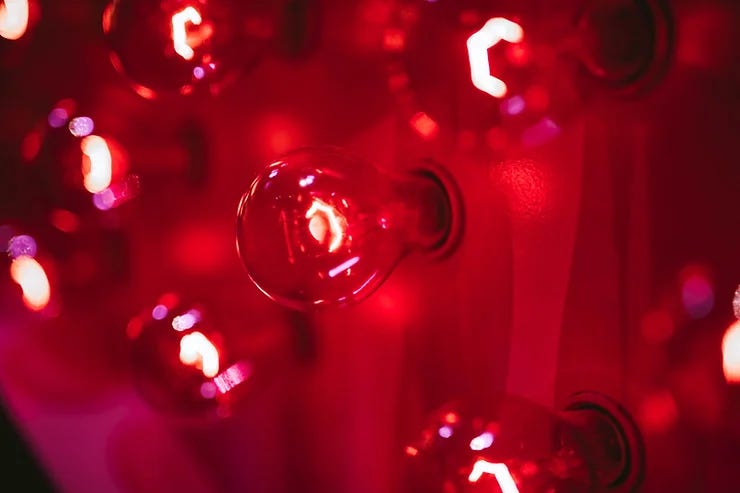Red Light Therapy: Everything You Need to Know
From MIT to Harvard, red and near infrared light therapy has a robust history of research and benefits. How does it all work? The science is a little brain-boggling, but in essence certain frequencies can penetrate deeper into your cells and stimulate the movement of electrons. These free electrons allow for a more efficient functioning of your mitochondria by breaking up harmful compounds that get in the way of energy production. Nitric oxide, a byproduct of this complicated process, can compete with oxygen and “clog up” your mitochondria’s energy production. This doesn’t mean nitric oxide is bad, because remember it’s valuable for your circulation and has many other benefits, but in the many-linked chain of energy production it can also act as a limiter like anything else.
Certain types of frequencies can give your cells a boost by stimulating the movement of electrons, which in turn creates a chain reaction in other molecules (like free hydrogen protons) to be utilized by your mitochondria to make energy, or ATP.(1) If that went over your head, don’t worry — it’s a little over mine, too. The important thing to remember is that specific light frequencies can have a drastic effect on your cells’ ability to produce energy and nourish your mitochondria directly. Since the health of your mitochondria are implicated in practically every condition we know, the benefits of this kind of therapy long-term are astoundingly broad.
NOTE: This article contains a few affiliate links, but all of these things have been personally vetted and they are high quality.
Let’s consider what the robust amount of research has to say about red and near infrared light therapy so far:





